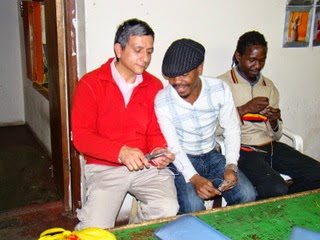In 2002, when I was developing the
e-commerce platform Sonnegocios.com, I
wrote an article related to e-commerce in developing countries. On this paper I
tried to introduce the concepts of e-commerce from the experiences that I found
while implementing merchant accounts. Below are the conclusions of the article
at that time. I have been following the
advances and success of e-commerce in several countries confirming that these
conclusions and suggestions were accurate and they could be still be used. An updated article is on its way… you can
find the document here.
E-commerce
A
model for developing countries
Conclusions
and recommendations
Tomando en cuenta los factores socios
económicos del país las empresas proveedoras de servicios de Internet deben
proponer modelos de soluciones de comercio electrónico bajo la modalidad de
ASP. De esta manera, las empresas de
países en desarrollo ingresaran a la nueva economía digital. Este tipo de modalidad es particularmente
interesante para el mercado boliviano y
países en desarrollo dadas las condiciones económicas actuales y la
falta de inversión y capital de las empresas.
Las ventajas del uso de la Internet son
entre muchas otras; que nos permite estar en contacto con nuestros clientes las
24 horas del día, los 7 días de la semana y los 12 meses del año; los costos
reducidos que representan a la empresa; la gran audiencia potencial a la que
podemos llegar con nuestras estrategias de ventas; nos permite automatizar los
procesos; y obtener información sobre nuestros clientes.
Para que la Internet obtenga un mayor
desarrollo en nuestro medio debemos implementar campañas off-line que nos
permitan educar a la población en el uso de esta tecnología. Si logramos
hacerlo los consumidores exigirán al mercado el uso de la Internet para fines
comerciales, lo cual beneficiaría grandemente a las empresas.
Debemos enseñar a navegar en el
ciberespacio mientras la infraestructura del mercado se va mejorando, así,
cuando la población tenga los recursos tecnológicos necesarios ya sabrá como
utilizarlos y nuestros negocios serán más accesibles para ellos.
Esta etapa educativa no debe demorar ya que
la tecnología está entrando a nuestro país con mucha fuerza y su tiempo
estimado para la estabilización no debe ser muy prolongado.
Las agencias de publicidad y marketing
deben estar al tanto de lo que ocurra en la Internet ya que son ellas las
encargadas de crear nuevas estrategias para las empresas. Deben encontrar
formas creativas de seducir a los
consumidores para evitar que se alejen con un simple"click".
El comercio electrónico fue definido como
el hacer negocio electrónicamente que incluye una estructura de negocio basado
en la información que se obtiene por medios de Internet como son e-mails, Word
Wide Web, boletines electrónicos, entre otros, ya sea que realice entre el
negocio y los clientes o entre negocios "Business to Consumer" o "Business to
Business".
Con los nuevos modelos de negocios se crean
nuevos modelos de Marketing que son más difíciles de controlar. Estos sistemas
buscan personalizar la compra lo que significa conocer los perfiles de cada
cliente.
La administración de las empresas no solo
se preocupara por conocer a sus clientes, sino que entablan una relación más
estrecha con ellos que es necesario hacerle un seguimiento, surgiendo así La
Administración de las Relaciones con los Clientes.
La seguridad es muy importante y se deben
considerar cuatro aspectos muy importantes al momento de realizar las
transacciones comerciales para dar confianza al negocio.
- Privacidad: se busca que la información sea privada, es decir que ninguna persona tenga acceso a ella a no ser solo el receptor.
- Autenticidad: que la persona que envía el mensaje es realmente quien dice ser. Es decir, el receptor es capaz de reconocer a su emisor sin ningún problema.
- Integridad de la información: lo que se busca es que el mensaje no sufra ninguna alteración al momento de enviarlo o recibirlo.
- No repudio: a lo que refiere este punto es que tanto el emisor y el receptor no puedan negarse de haber enviado o recibido algún mensaje.
Es necesario hacer alianzas con otras
empresas asociados (proveedores y clientes) ya que crear una sitio
independiente toma mucho tiempo y dinero.
Al mismo tiempo, es importante formar Grupos de Negocio para las
pequeñas y medianas empresas que quieran incursionar en el comercio
electrónico, ya que para la implementación de esta tecnología se requiere mucho
tiempo e inversión que solas no podrían cubrir.
Al compartir un entorno de Internet les permitirá reducir los costos
tanto en la implementación como en el desarrollo del negocio mismo y apoyo en
las campañas publicitarias.







